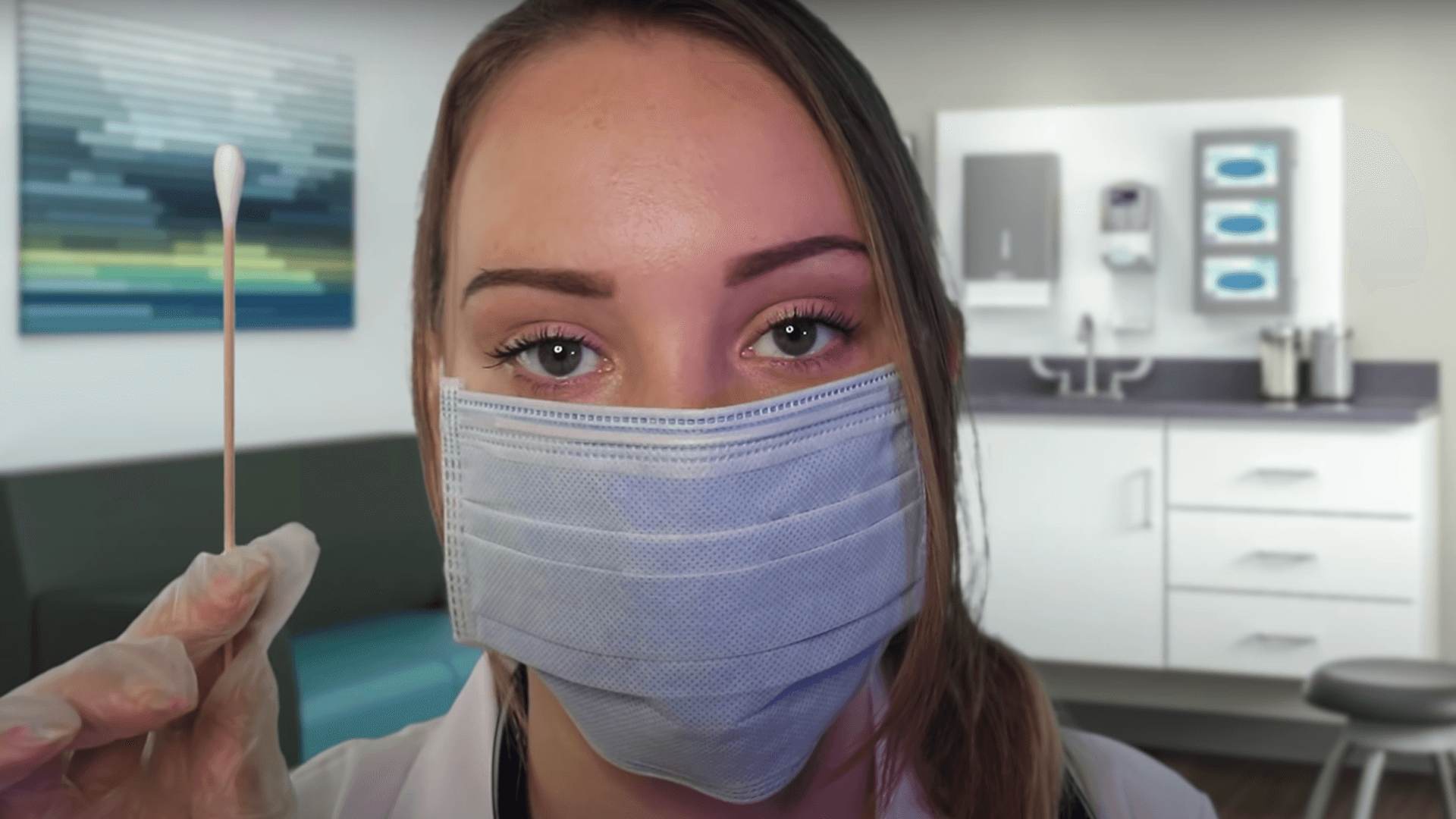SUMMARY
This is AI generated summarization, which may have errors. For context, always refer to the full article.

A masked woman rustles around, pulling on medical gloves, then holds what looks like a long Q-Tip up to the camera.
“I’m just going to take a swab at the back of your throat, so open up wide for me,” she says gently. “Very good, very good.”
Strange as it may seem, this YouTube video simulation of a coronavirus PCR test has attracted more than 1.2 million views over the past eight months. With its soft narration and intimate air, the aim is to trigger something known as autonomous sensory meridian response. ASMR is a psychological reaction experienced by some people when they are exposed to certain sounds or visuals. Whispering, scratching surfaces and even cutting soap can all prompt what many describe as a pleasant tingling sensation that begins at the back of the scalp.
ASMR is big business on social media. YouTube, Instagram and TikTok host a huge number of related videos, some of which attract tens of millions of viewers. Interest in these calming clips has spiked during the pandemic and a new strand of Covid-19-inspired content has emerged — much of it with a secondary aim of educating people and dispelling misinformation surrounding the virus.
Giulia Poerio is a psychology lecturer at the University of Essex who specializes in ASMR. “Quite often you see themed videos going along with whatever’s trending. So, at Halloween you’ll see ASMR Halloween videos,” she told me. Now, she said, we are seeing a rise in pandemic and medicine-related clips.

In a video posted in April, an influencer with the username Angel ASMR runs through a list of COVID-19 conspiracy theories. “These are simply theories, these are not facts,” she murmurs into the microphone, cracking open a Corona beer. “If you’re trying to get information on the coronavirus make sure you’re going to credible websites: World Health Organization, CDC.”
In the most popular testing video on YouTube, the host, dressed as a nurse, taps on her iPad, reading out advice from the World Health Organization. Other influencers replicate getting a check-up via Zoom, being informed of a positive result, or having a vaccine administered by a nurse.
“It might help to reduce anxiety about really doing it,” said Poerio. “It’s like a preview and that helps us, potentially, deal with the thing when it actually happens.”
Isabella Pontbriand is a 24-year-old influencer from Florida, who specializes in medical-themed ASMR content. She began producing videos last year and has since posted dozens of role-plays, with titles such as “Cranial nerve exam” and “Emergency Room Doctor Stitches You.”
“I noticed that, when the pandemic first started, my subscriber count doubled,” she told me.
Her channel, which includes its own COVID-19 swab test clip, now has 1.9 million views. Pontbriand often asks her medical student boyfriend to help lend authenticity to her work.
“Personally, when I watch ASMR it shuts my mind off and it becomes the only thing I’m focused on, so I’ve always found it helpful to watch when I’m feeling stressed or overwhelmed,” she said.
“I do think ASMR videos are a place where you can educate people. Any platform where you have people’s attention is a place where you can try to teach them something they may not know.”
A wealth of scientific research shows that alarmist health messaging often leads to defensive reactions in the intended audience, while feeling relaxed may make people more receptive to new concepts.
“By making people feel good at the same time as giving them the information, it could be that information is getting through,” said Poerio.
According to Pontbriand, the intimate air of ASMR videos also has a key part to play — especially in a world where close contact between people has become something to fear.
“I think people like the ASMR swab videos because personal attention is a really big trigger,” she said.

As the pandemic continues, a new genre of coronavirus ASMR videos has sprung up. In September, a user named Soy ASMR uploaded a clip titled “COVID-19 is finally over!”, in which she invites viewers to imagine a brighter future, where they are getting ready for a post-COVID-19 college party. “How long have you been waiting for this day?” she whispers to her 624,000 subscribers. “Why are you still wearing a mask? Here, let me,” she says before removing a mask covering half of the screen. – Rappler.com
Isobel Cockerell is a reporter with Coda Story. A graduate of Columbia Journalism School, she has also reported for WIRED, USA Today, Rappler, The Daily Beast, the Huffington Post and others.
This article has been republished from Coda Story with permission.
Add a comment
How does this make you feel?


![[Time Trowel] Evolution and the sneakiness of COVID](https://www.rappler.com/tachyon/2024/02/tl-evolution-covid.jpg?resize=257%2C257&crop=455px%2C0px%2C1080px%2C1080px)


There are no comments yet. Add your comment to start the conversation.